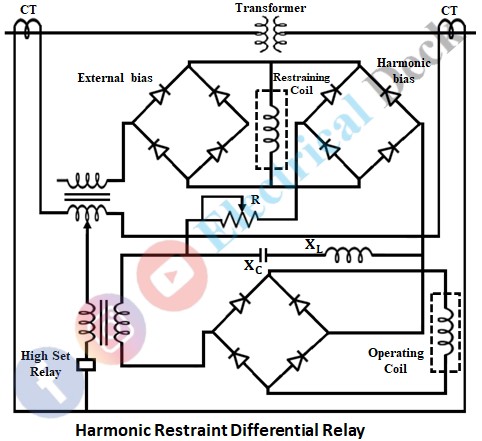The protective scheme for the transformer that takes care of magnetizing inrush current without affecting the sensitivity is a percentage differential relay incorporating a harmonic restrain relay also known as harmonic restraint differential relay.
Principle of Harmonic Restraint :
The magnetizing inrush currents contain high components of even and odd harmonics. The harmonic component associated with short circuit current is negligible. This principle is used for restraining the relay from operation during the initial current inrush. The harmonic restrain differential relay remains inoperative to magnetizing currents and trips during fault currents.
In this relay, the operating coil takes only the fundamental component of current. The rectified sum of fundamental and harmonic components is given to the restraining coil. Due to this, the currents with high harmonic content will give high restraining torque and the relay remains inoperative.
Therefore, the operating principle of harmonic restraint is to filter out the harmonies from the differential current, rectify them and add them to the percentage restraint.
Harmonic Restraint Differential Relay :
This type of relay is sensitive to fault currents but remains inoperative to the magnetizing currents. The circuit diagram of this scheme is shown in the below figure. This relay provides protection against the magnetizing inrush current, i.e., the initial primary winding current of transformers on no-load which is many times greater than the rated current.
It consists of a series LC circuit, which allows only fundamental harmonic components to flow through the operating coil and diverts all higher harmonies and dc components path through the restraining coil. As the restraining coil receives rectified sum of fundamental and harmonic components, inrush currents having higher harmonic contents gives more restraining torque and the relay remains inoperative to magnetizing current.

